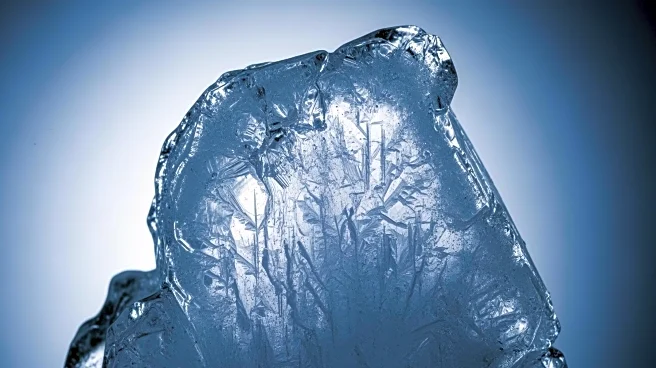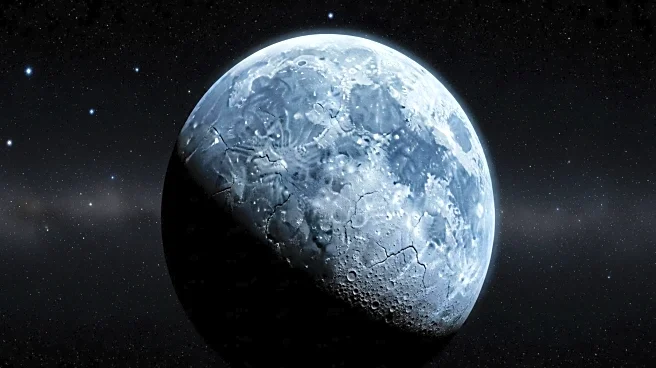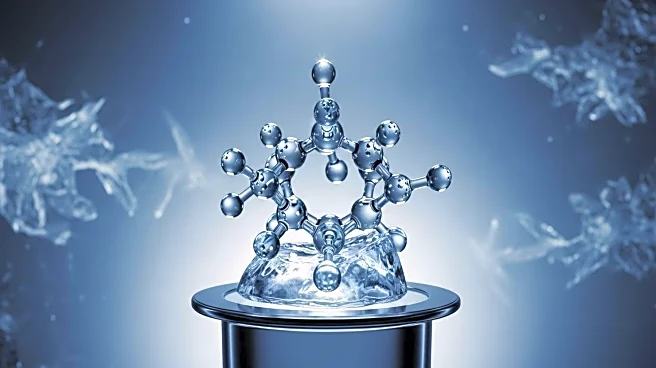What's Happening?
A team of scientists led by the Korea Research Institute of Standards and Science (KRISS) has discovered a new phase of ice, known as ice XXI, which forms when water is rapidly compressed at room temperature. This discovery, published in Nature Materials,
reveals that ice XXI emerges within the pressure range of ice VI, a form previously thought to exist on icy moons like Titan and Ganymede. The researchers used diamond anvil cells to compress water molecules, capturing the transformation with giant X-ray lasers. Ice XXI is a metastable structure, existing in a precarious balance between phases, and is composed of a unique tetragonal crystal structure.
Why It's Important?
The discovery of ice XXI expands the understanding of ice formation and its diverse crystalline structures. This research could have implications for studying extraterrestrial environments, such as icy moons, and understanding their composition. The findings suggest that more high-temperature metastable ice phases may exist, offering insights into the behavior of water under extreme conditions. This knowledge could influence future research in planetary science and materials science, potentially impacting the development of technologies that utilize ice's unique properties.
What's Next?
Further investigations are expected to explore additional metastable ice phases and their transition pathways. Researchers aim to understand the crystallization process from water to ice in greater detail, which could lead to new discoveries about the composition of icy celestial bodies. The study's findings may prompt further experiments using advanced X-ray and particle accelerator technologies to uncover unknown ice crystal phases.
Beyond the Headlines
The discovery of ice XXI highlights the complexity and mystery of water as a material. Despite its simple composition, water can form numerous crystalline structures, challenging scientists to unravel its behavior under varying conditions. This research underscores the importance of interdisciplinary collaboration in advancing scientific knowledge and exploring the unknown aspects of common substances.













